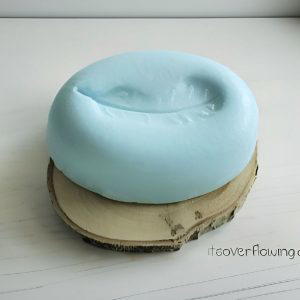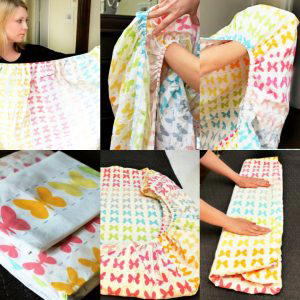Are you tired of seeing your clothes lose their freshness and color after just a few washes? Knowing how to do laundry properly can make all the difference. Whether you’re living independently for the first time or simply looking to improve your laundry skills, this guide will walk you through the essential steps of doing laundry. From sorting your clothes to choosing the right detergent and setting the correct washing parameters, you’ll learn everything you need to know to maintain the lifespan and cleanliness of your wardrobe. Let’s dive in and ensure that your laundry routine keeps your clothes looking and feeling their best.

Gathering Laundry Supplies
Before starting a laundry load, it’s essential to gather the necessary supplies to ensure a proper and effective wash cycle. Here’s a breakdown of essential considerations and tips for gathering laundry supplies.
Choosing the Right Detergent
Selecting the appropriate laundry detergent is crucial for ensuring clean and well-maintained clothes. Factors such as fabric type, color, and washing machine type play a key role in determining the suitable detergent. It’s important to opt for a detergent that aligns with the specific needs of the laundry load. For instance, when dealing with colorful garments, using a color-safe detergent can help prevent fading and preserve the vibrancy of the clothes. Delicate fabrics, such as silk or wool, require a mild and gentle detergent to avoid damage. Additionally, individuals using high-efficiency washing machines should look for detergents specifically formulated for such machines to optimize cleaning performance and prevent excess sudsing.
Some specialty detergents cater to specific needs, such as hypoallergenic options for individuals with sensitive skin or allergies. Eco-friendly detergents, formulated to minimize environmental impact, provide a sustainable choice for environmentally-conscious consumers. When choosing a detergent, it’s beneficial to consider these specialty options based on personal preferences and any specific laundry requirements.
Understanding Fabric Care Labels
Fabric care labels convey essential information about the recommended care and maintenance of clothing items. Understanding the significance of fabric care labels is vital for preserving the quality and integrity of garments. Care labels typically feature a set of symbols that denote specific instructions for washing, bleaching, drying, ironing, and dry cleaning. It’s important to familiarize oneself with these symbols and their meanings to execute proper laundry care practices.
Interpreting fabric care labels accurately allows individuals to tailor their laundering methods according to garment requirements, thereby extending the lifespan of their clothing. For instance, recognizing symbols indicating delicate washing or hand-washing instructions enables individuals to handle fragile fabrics with the necessary care. Moreover, deciphering the appropriate drying methods prevents potential fabric shrinkage or damage in the drying process.
Remember, by using the right detergent and understanding fabric care labels, you can ensure that your laundry is handled with the utmost care, leading to well-maintained and long-lasting garments.
Sorting and Preparing Laundry
Before diving into the laundry process, it’s essential to start with the initial steps of sorting and preparing your laundry. These initial steps play a crucial role in ensuring the effectiveness of the overall laundry process.
Pre-Treating Stains
Pre-treating stains is an integral part of the laundry routine, especially when dealing with common stains such as grease, ink, and grass. Here’s a comprehensive guide on pre-treating common stains using household items or specialized stain removers:
- Grease Stains: For grease stains, apply a dishwashing detergent directly to the affected area before washing to help break down the grease.
- Ink Stains: To tackle ink stains, dab the area with rubbing alcohol or use a specialized ink stain remover, then launder as usual.
- Grass Stains: When dealing with grass stains, create a paste using equal parts of baking soda and water, apply it to the stain, and let it sit for 10-15 minutes before washing.
Remember to always check the garment’s care label for any specific instructions on stain removal.
Understanding Water Temperature and Cycle Selection
The impact of water temperature on laundry cannot be understated. Different fabric types require specific water temperatures and washing machine cycles for optimal cleaning results. Here’s how to navigate water temperature and cycle selection:
- Warm Water: Ideal for heavily soiled items and durable fabrics, such as cotton and linens.
- Cold Water: Best suited for delicate fabrics, bright or dark-colored items, and preventing shrinkage.
- Hot Water: Effective for whites, bedding, and towels to achieve a deep clean and eliminate bacteria and allergens.
When it comes to selecting the appropriate washing machine cycle, consider the fabric care label and the level of soiling. Choosing the right cycle ensures thorough cleaning while preserving the fabric integrity.
By mastering the art of pre-treating stains and understanding the significance of water temperature and cycle selection, you set the stage for successful laundry outcomes. Stay tuned for the next steps in the laundry process.
Washing and Drying Process
When it comes to the washing and drying process, there are several key considerations to keep in mind to ensure that your clothes remain in optimal condition.

Effective Drying Techniques
Effective drying techniques can significantly impact the longevity and quality of your clothing. To prevent shrinkage and preserve fabric quality, it’s essential to consider alternative drying methods. Air-drying delicate items can be a gentle and natural approach, helping to maintain the integrity of delicate fabrics. Additionally, utilizing dryer balls in the drying cycle can reduce drying time, soften fabrics, and minimize energy consumption, making it a sustainable choice. For more information on various drying techniques.
Folding and Ironing
Folding and ironing are crucial steps in maintaining the appearance and condition of your garments. Properly folding and ironing various types of clothing can help prevent wrinkles and ensure a polished look. When ironing, it’s important to adjust the heat settings based on the fabric type to avoid damage. There are also innovative laundry-folding and ironing machines available that can streamline this process, providing convenience and efficiency. For more insights on laundry-folding machines, you can explore Laundry Folding And Ironing Machine options. Additionally, some individuals find that certain textiles do not require ironing and maintain their appearance through proper folding.
By implementing effective drying techniques and mastering the art of folding and ironing, you can prolong the lifespan of your clothing and ensure that they look their best.
Laundry Tips and Best Practices
Doing laundry is a regular household chore that can be optimized for environmental sustainability and efficiency. By adopting eco-friendly practices and considering innovative laundry solutions, you can not only reduce your carbon footprint but also streamline the laundry process for better results.
Eco-Friendly Laundry Practices
When it comes to eco-friendly laundry practices, there are several simple yet effective strategies to minimize environmental impact. One of the most impactful changes is to use cold water for washing clothes. This not only reduces energy consumption but also helps preserve the quality of the fabrics. Additionally, using eco-friendly detergents and fabric softeners can contribute to sustainable laundry practices. These products are made with biodegradable ingredients and are free from harsh chemicals, making them safer for the environment and your skin.
Overuse of detergent is a common mistake that can be avoided to promote eco-friendly laundry. Using excessive detergent not only leads to unnecessary chemical buildup in your clothes but also wastes resources. By following manufacturer recommendations and being mindful of the appropriate detergent amounts, you can maintain clean, fresh-smelling laundry without harming the environment.
Incorporating sustainable laundry habits also involves extending the lifespan of your clothing. This can be achieved by air-drying clothes whenever possible, reducing the frequency of washing, and using natural stain-removal methods. These practices not only conserve energy but also contribute to the longevity of your garments, reducing the need for frequent replacements
Clever Laundry Solutions
Innovations in laundry technology have introduced efficient and convenient solutions that enhance the washing and drying process while reducing resource consumption. Smart laundry trackers and sensors can revolutionize how you monitor and manage your laundry cycles. These devices provide real-time updates on energy usage, water consumption, and cycle progress, allowing you to make informed decisions for a more eco-friendly approach.
Another innovative solution that simplifies laundry tasks is the development of laundry folding robots. These automated systems are designed to neatly fold and organize freshly laundered clothes, saving time and effort while maintaining clothing quality. Additionally, advanced stain-removing pens and clothing steamers offer quick and effective ways to address fabric imperfections without the need for excessive washing or harsh chemicals.
For those seeking to eliminate odors and sanitize fabrics without extensive washing, odor-eliminating balls and ozone laundry systems provide innovative alternatives. These technologies utilize advanced processes to remove odors and bacteria, reducing the frequency of conventional washing cycles and promoting fabric longevity.
By integrating eco-friendly practices and embracing innovative solutions, you can elevate your laundry routine to be more sustainable, efficient, and convenient. These approaches not only benefit the environment but also enhance the longevity and quality of your clothing, providing long-term value and impact.
FAQS About
Laundry is a common household chore, but it can bring up a lot of questions, especially for those new to managing their own laundry. Here are some frequently asked questions about laundry to help you tackle your laundry-related perplexities.
How Do I Remove Tough Stains?
Tough stains can be a headache, but with the right approach, they can be banished from your clothes. Consider pretreating the stain with a stain remover or a mixture of water and detergent before washing. For specific types of stains, such as grease or ink, there are specialized stain removal products available. Additionally, make sure to check the care label on your garment for any specific instructions on stain removal.
Can I Wash Different Fabrics Together?
While it’s tempting to throw all your laundry into one load, it’s important to separate your laundry by fabric type and color to prevent damage. Washing different fabrics together can lead to color bleeding and potential damage to delicate fabrics. Sort your laundry into categories such as whites, darks, and delicates to ensure the best results.
How Often Should I Wash My Clothes?
The frequency of washing clothes can vary based on individual preferences and the type of clothing. Generally, items such as undergarments and workout clothes should be laundered after each wear. However, outerwear like jeans and sweaters can typically be worn multiple times before needing a wash. Consider factors like body sweat, odor, and visible stains when determining whether a garment needs to be laundered.
Conclusion
Doing laundry can seem like a daunting task, but with the right techniques and tips, it can become a manageable chore. The key is to approach it systematically, from sorting your clothes to choosing the right detergents and machine settings. By following the tips and tricks outlined in this guide, you’ll be able to tackle your laundry with confidence and efficiency.
Embrace the Efficiency
Optimizing your laundry routine can make a noticeable difference in your daily life. From sorting your clothes to using the right water temperature, efficiency is key to saving time and energy. Smaller laundry loads are not only more efficient but also ensure that each item is thoroughly cleaned.
Master the Techniques
Understanding how to properly wash and fold clothes can make a world of difference in the longevity of your wardrobe. Techniques like using mesh bags for delicates and washing clothes inside out can help preserve their quality and keep them looking newer longer.
Conscious Care for Clothes
Taking care of your clothing goes beyond the washing machine. Regular maintenance, such as checking hoses and filters, and emptying the lint trap after every load, can keep your machines running smoothly and prevent potential hazards.
By adopting these laundry tips and tricks, you can transform laundry day from a dreaded task to a manageable and even enjoyable part of your routine. Making small changes to your approach can lead to big improvements in the way you tackle this essential household chore.










